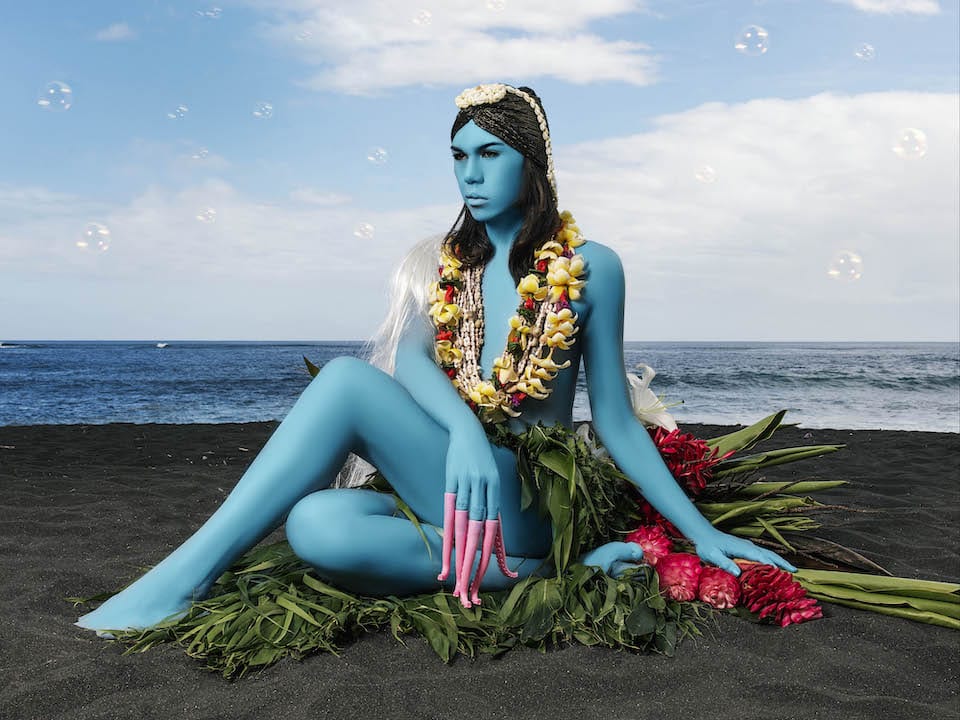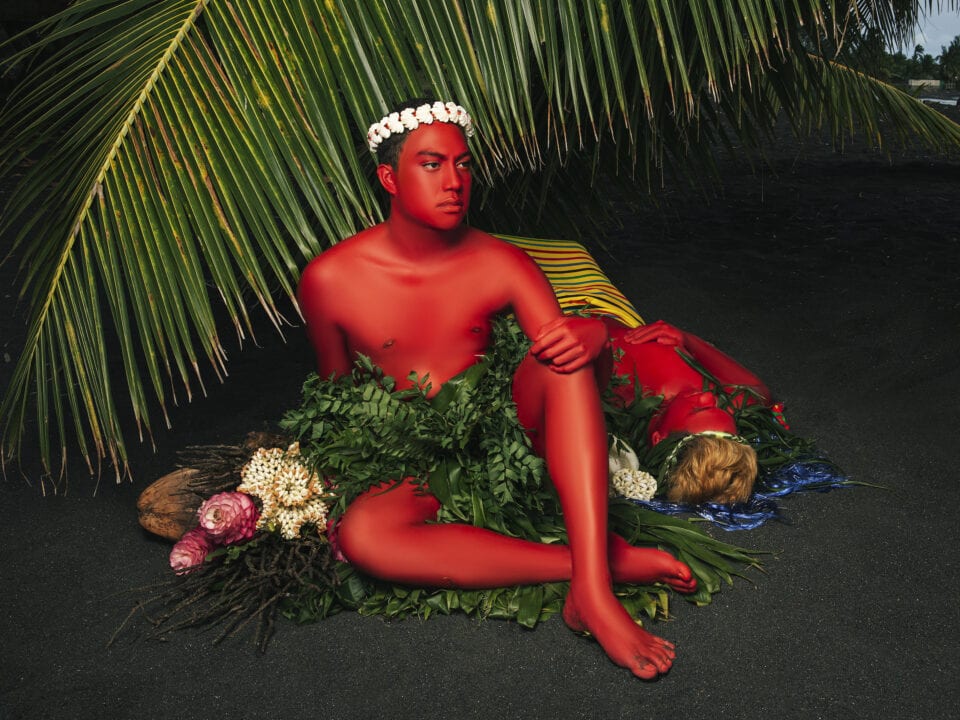Namsa Leuba is a Swiss-Guinean photographer and art director whose work mainly focuses on the African identity seen through the western gaze. Spanning documentary, fashion and performance, Leuba’s images consider the semiotics of her upbringing and cultural heritage. A new show at Boogie Wall Gallery, London, explores gender dysphoria, myth and reality. Josefina Kapelo, Galery Director, sheds light on the exhibition.
A: The focus of Illusion Tahiti is to question the exoticism and sexualisation of Polynesian women in western art and historical narratives. How does Leuba approach this problematic representation?
JK: Leuba’s approach is to make individuals act out their role of the “Vahine” (Polynesian woman) through non-binary definitions of gender conformity. For this reason, she has decided to represent the “Māhū” as her sitters, through narratives with a painterly sensibility.Mahu are men who remain male –they have the perceived “femininity”of a woman and the”virility”associated with men. “Māhū” are respected and venerated in the community and hold important social roles within the culture.
A: How does Leuba approach the idea of otherness and gaze in the images? Is there a new narrative being constructed here?
JK: She wanted to go against the traditional European codes and myths that were imposed during colonial eras – where a female entity was automatically perceived as an object in opposition of the occidental white woman who was seen as “pure” and “precious.” However, rather than having women in front of the lens, she chose to photograph non-binary individuals to further question about the ways Polynesian women have been perceived – the roles in which they’ve been cast – for centuries.

A: How do the figures engage with the lens? What role do they play in the performance of the images? How much autonomy were they given in terms of the composition?
JK: For many years, Leuba lived in French Polynesia. She immersed herself in their population and culture. She has been able to create a trusted relationship with her subjects and has directed the whole process, staging fictional narratives with a painterly sensibility. The models distinguish themselves with colourful cosmetics and body paint, creating a surreal sense of beauty that undermines traditional standards. Leuba decorated their figures with cultural and social ornaments to blend into nature – like creatures that sit between myth and reality. They create symbols of their diverse identities through an incarnation of spirit – by the image beyond the confines of the body. They are part of a community but are unique individuals above all.
A: In an age of post-truth, digital avatars, clickbait and mythmaking, where does this exhibition sit in 2020? What lessons, if any, does it offer?
JK: When Leuba introduced me to this new body of work a year ago, I was smitten with it. The world today has a long way to go in terms of becoming respectful of individuals no matter the gender, sexuality or skin colour. We are barely tolerant as it is. This work talks speaks of a community which has fully accepted all of its inhabitants. More so, they enhance them. Acceptance starts here.
A: If you could tell artists only one thing about the show, what would it be?
JK: To learn more about the Māhū community and enjoy Namsa Leuba’s work and her photography technique. I have never seen someone working colours on photography with such vibrance in the way that Leuba does!

At Boogie Wall Online until 7 October. Click here.
Credits: All images from Namsa Leuba’s Illusion Tahiti (2019).
1. Dans Son Nid, 100x75cm.
2. Desiree (I), 30x40cm.
3. La Femme A La Noix De Coco (II), 60x80cm.
4. La Deesse Hiti (I), 100x75cm.
5. La Fleur De La Tentation, 60x80cm.
6. Tealanie, 60x80cm.
7. La Detente (I), 100x75cm.









